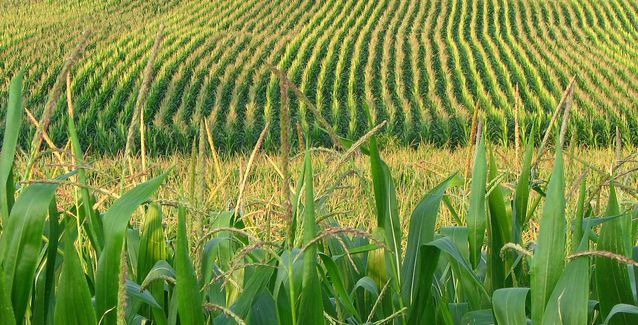Arkansas farmers to see higher input costs continue in 2023
by March 9, 2023 7:37 am 1,038 views

A major issue that plagued Arkansas farmers in 2022 was the steep rise in input costs. Part of the problem started in February 2022 when Russia invaded Ukraine. The invasion led to a steep increase in fertilizer costs and fuel costs.
Russia exports about 19% of the world’s potassium and exports about 15% of the world’s nitrogen, according to the United Nations. The country also produces about 14% of the global market’s phosphorus. All of these inputs are found in fertilizers.
Natural gas is a key component in fertilizer production and Russia is the second leading producer in the world. As 2023 continues to unfold, the dynamics that pushed input costs higher for farmers are not projected to go down in most sectors, according to the University of Arkansas System Division of Agriculture’s Enterprise Budget forecasts. The forecasts are a tool that farmers can use to project what costs could be during the upcoming growing season.
“As farmers were in the field preparing to plant their crop, Russia invaded Ukraine fueling uncertainty across the world and in agricultural input markets,” said Hunter Biram, extension economist for the University of Arkansas. “We saw prices paid for chemicals, fertilizer, and fuels increase by about 10% to 15% over 2021 after there was a 30% increase in the prices paid for chemicals, 60% increase in prices paid for fertilizer, and 50% increase in the prices paid for fuels relative to 2020. Any potential relief the high commodity prices provided was essentially eliminated by these increases in input prices.”
According to the 2023 Division of Agriculture crop enterprise budgets, nitrogen fertilizer is projected to be about 6% lower relative to 2022 but still 14% higher relative to 2021. Phosphate and potash are projected to be up some over 2022 at around 1.6% and 0.5% higher, respectively. Diammonium phosphate, known as DAP, and defoliant, key inputs used in cotton production, are projected to be up 7% and 10% respectively over 2022. Insecticides and fungicides, which are key inputs used in rice production, are projected to be up 98% and 18%, respectively, over 2022.
The Federal Reserve has raised interest rates during the last year to combat inflation. Diesel prices have also been on the rise. The Enterprise Budget forecasts predict that interest rates and diesel prices combined will spike 73% over 2022 in per-acre costs for farmers in the Natural State. Seed costs for corn are projected to be about 12% higher as compared to 2022.
Phosphate is predicted to be up about 2%, while zinc sulfate is projected to be up about 15% from last year.
One positive side-effect from the war is that grain prices were higher. The U.S. Department of Agriculture (USDA) projects that U.S. corn farmers will plant 92 million acres this year, an uptick from the estimated 88.5 million acres planted last year. That might bode well for Arkansas corn farmers who are coming off a relatively down year. Arkansas farmers harvested 690,000 of the 710,000 acres of corn planted in 2022. The number of acres planted was down 16.5% from last year. The state average yield was 176 bushels per acre, down 4.3% from the prior year’s 183 bushels per acre.
Insecticides and fungicides for rice are projected to be up 98% and 18%, respectively. Rice acres will likely be down in 2023, as the USDA is projecting a slight dip in U.S. rice exports.
Arkansas is the leading rice producer in the nation, accounting for nearly half of the nation’s crop annually. Planted acreage in 2022 topped 1.11 million acres. All rice production for the state was at 81.2 million hundredweight last year, down 5% from the August forecast and down 11% from last year’s production of 91.1, according to USDA estimates.
For soybean farmers, phosphate and potash are projected to be up 1.6% and 0.5%, respectively. Herbicides are projected to be down 7% relative to 2022 but still up 26% over 2021. Overall soybean acres are projected to be down about 500,000 acres nationwide to 87 million in 2023, the USDA reported.
Soybeans easily remain the state’s largest crop. Farmers harvested 3.15 million acres in 2022, up nearly 140,000 acres from 2021, according to the USDA. Yield from those acres is projected to top 53 bushels per acre, a state record.
One crop, cotton, is almost certain to lose acres this year. An estimated 630,000 cotton acres were harvested in Arkansas last year. Prices forced a significant uptick in acres in the Natural State.
“This is up 155,000 acres or one-third from 2021 and the highest since 2011,” said agriculture economist Scott Stiles.
Many economists are projecting an economic slowdown and that will have an impact on how many acres are dedicated to cotton, Stiles said. According to the Cotton Grower Acreage Survey, the state is projected to have 550,000 cotton acres this year, a 13% (80,000) acre drop from the previous year.
